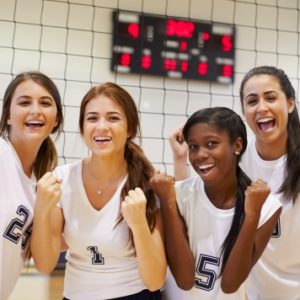
Learn how to teach your teen how to hydrate before, during, and after events with these youth sports hydration guidelines.
Hydration is something you don’t want to overlook for young athletes. A few starter tips to ensure your child is ready for the heat and humidity is hydrating before and giving them time to adjust to the temperature they will be practicing or competing in. Adequate water does more than help regulate your temperature – it protects a child’s spinal cord, lubricates the joints and helps keep them regular! Adding frozen fruit to your child’s water bottle may help increase consumption, just be sure it stays chilled and gets a good washing when it’s done. For specific recommendations check out the youth sports hydration guidelines below.
This post contains an affiliate link. As an Amazon Associate, we earn from qualifying purchases. The link is noted with an asterisk (*).
Before event hydration guidelines
- Develop a plan and make sure your child has a few water bottles packed. Pack an extra just in case one gets lost or they are overly thirsty! The goal is to start an exercise in a hydrated state.
- 2-3 hours before aim for your child to have ~16-20 oz (about the size of a standard plastic water bottle)
- Top off hydration 10-15 minutes before with an additional 8-12 oz
- All these numbers seem confusing? Fill a clear bottle with measured water a half-cup (4 oz) at a time, marking each 4 oz segment with a permanent marker. Now your kid will get a little math lesson in while they are hydrating!
- A pre-exercise hydration strategy should also be paired with a pre-exercise food strategy!
During event hydration guidelines
- Depending on the sport, there may not be a lot of water breaks so make sure your child is aware of drinking when they have the time.
- Ideally, 3-8 oz should be consumed every 15-20 minutes. For reference, a gulp is ~1 oz. Tell them to have at least 3-4 big gulps when they get breaks (or one section on their 4-oz marked water bottle).
- If your child is training or competing at a high intensity lasting more than 60-90 minutes (typical in many team sports), a carbohydrate/electrolyte-containing beverage may be ideal. This will help replace electrolytes lost in sweat, which is important for muscle contractions and the proper function of your heart, and the carbohydrate will ensure adequate energy.
- For long games, fast-acting carbohydrates, like whole fruit or 100% fruit chews can be eaten (at half time or between quarters/innings) with water for a good carbohydrate source. See these tips for teenage athletes.
After event hydration guidelines
- The goal is to replace any fluids or electrolytes that caused a fluid deficit or weight loss through fluid loss. You know your kiddo. The exact amount depends on sweat rate, humidity, and other factors. A good rule of thumb is to make sure they continue to consume water after practice/games and when they are eating their recovery meal.
- Consuming snacks or meals that contain small amounts of sodium (salt) will help speed up the rehydration process by making your child feel thirsty and help the body retain fluids that are consumed. You’ll know if you have a salty sweater on your hands if they have a white salt ring on their sweat-dried clothes!
- When arriving at home, offer a tasty popsicle to help replenish fluids and healthy carbs.
Make hydration fun by letting your kid choose their own fun water bottle. Hydro Flask* bottles come in many colors and sizes and are good for all ages!










